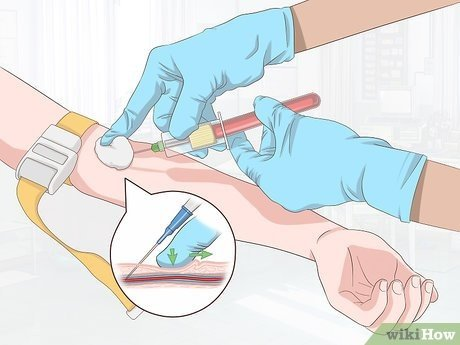When drawing blood on a preschooler, the phlebotomist should:
Explain the procedure to the parent and child.
Not tell the child when the needle insertion is coming.
Obtain a heel stick.
Obtain a thumb stick.
The Correct Answer is A
Choice A Reason:
Explaining the procedure to both the parent and the child is crucial. It helps in preparing the child psychologically and ensures that the parent is informed and can provide support during the process. Clear communication can reduce anxiety and make the child more cooperative. It is also a part of informed consent, where the parent understands what the procedure entails and why it is necessary¹².
Choice B Reason:
Choosing not to tell the child when the needle insertion is coming might seem like a way to avoid causing them anticipatory anxiety. However, this approach can lead to mistrust. Children need to be prepared for what to expect, and surprising them can be more traumatic in the long run. It is better to be honest and use age-appropriate language to describe the sensation as a 'quick pinch' or 'poke'¹².
Choice C Reason:
Obtaining a heel stick is a common method for blood collection in infants, particularly newborns, as their veins are not as developed. However, for preschoolers, venipuncture is usually the preferred method because they have more developed veins, and it allows for a larger volume of blood to be collected if needed³.
Choice D Reason:
Obtaining a thumb stick is not a standard practice for blood collection in preschoolers. The thumb has bones and tendons close to the surface, which can increase the risk of injury. The preferred sites are the antecubital fossa of the arm or the back of the hand where the veins are more accessible and there is less risk of hitting bone³.
Nursing Test Bank
Naxlex Comprehensive Predictor Exams
Related Questions
Correct Answer is D
Explanation
Choice A reason:
Collecting stool directly into a sterile container is not related to providing a sputum specimen. Stool samples are collected for different types of tests, such as fecal occult blood tests or microbiological cultures, and are not used for respiratory assessments.
Choice B reason:
Discarding the first urine of the day and collecting for 24 hours is a procedure for a 24-hour urine collection test, which is used to assess kidney function and other conditions. This process is unrelated to sputum specimen collection, which is used to evaluate respiratory infections or conditions.
Choice C reason:
Aggressively swabbing the inside of the cheek is a method used to collect cells for DNA testing or to check for oral infections. This action does not pertain to sputum collection, which requires a sample from the lower respiratory tract.
Choice D reason:
Taking a deep breath and then expectorating (coughing up and spitting out) is the correct method for providing a sputum specimen. This technique ensures that the sputum comes from deep within the lungs, which is necessary for accurate analysis of respiratory pathogens or cells.
Correct Answer is B
Explanation
Choice A reason:
Cleaning the site is a step that should be completed before anchoring the vein. The site should be cleaned with an antiseptic to reduce the risk of infection. Once the vein is anchored, cleaning the site again could displace the vein and compromise the anchoring.
Choice B reason:
After anchoring the vein, the phlebotomist should perform the procedure, which involves inserting the needle into the vein at the appropriate angle. Once the needle is in place and blood is seen in the tubing, the phlebotomist can proceed to collect the necessary amount of blood into the vacutainers or syringe.
Choice C reason:
Examining the needle is not the next step after anchoring the vein. The needle should be examined before the procedure begins to ensure it is the correct size and gauge for the venipuncture and that there are no defects.
Choice D reason:
Reapplying the tourniquet is not necessary at this point in the procedure. The tourniquet should already be in place to engorge the vein, making it easier to anchor and access. Reapplying it could cause discomfort or even disrupt the already anchored vein.

Whether you are a student looking to ace your exams or a practicing nurse seeking to enhance your expertise , our nursing education contents will empower you with the confidence and competence to make a difference in the lives of patients and become a respected leader in the healthcare field.
Visit Naxlex, invest in your future and unlock endless possibilities with our unparalleled nursing education contents today
Report Wrong Answer on the Current Question
Do you disagree with the answer? If yes, what is your expected answer? Explain.
Kindly be descriptive with the issue you are facing.
